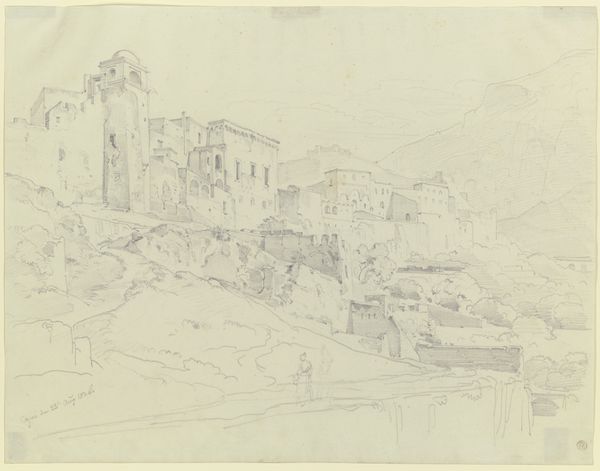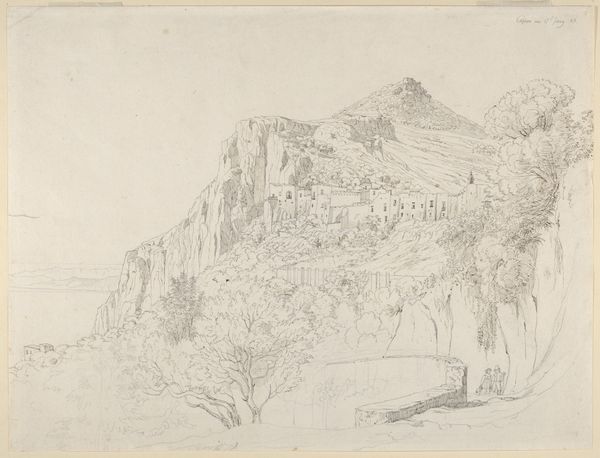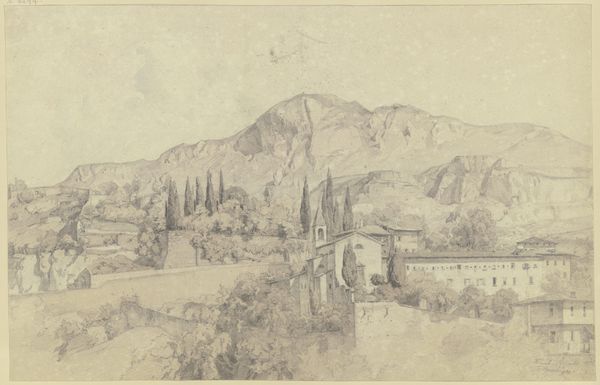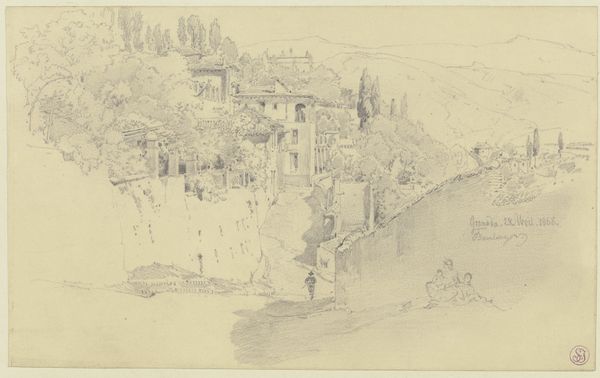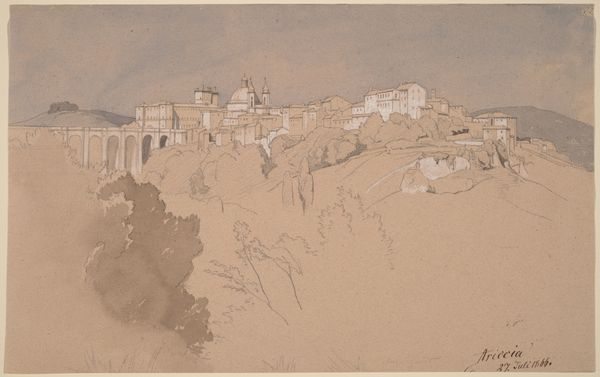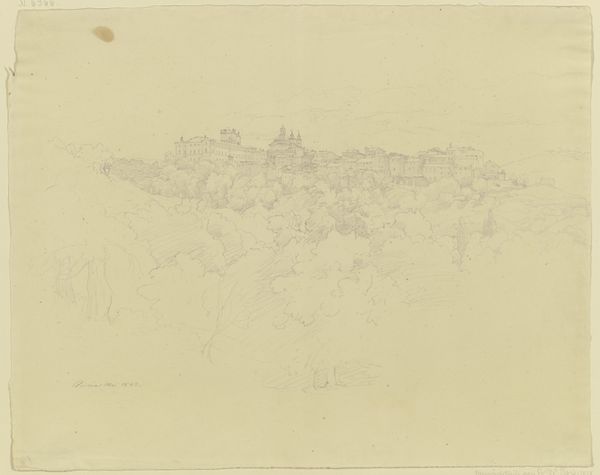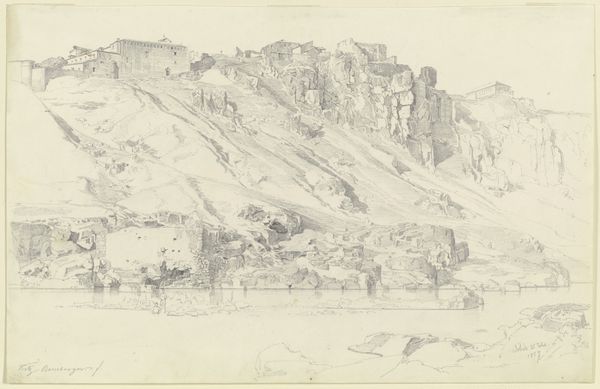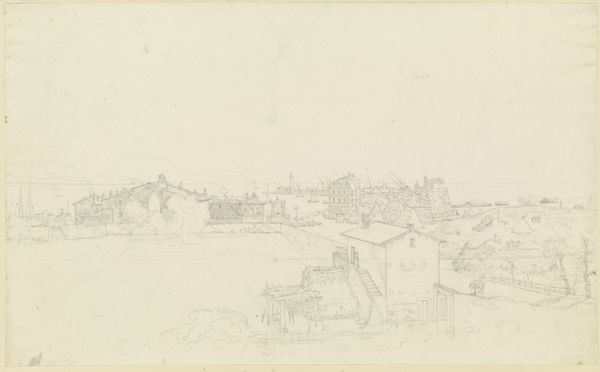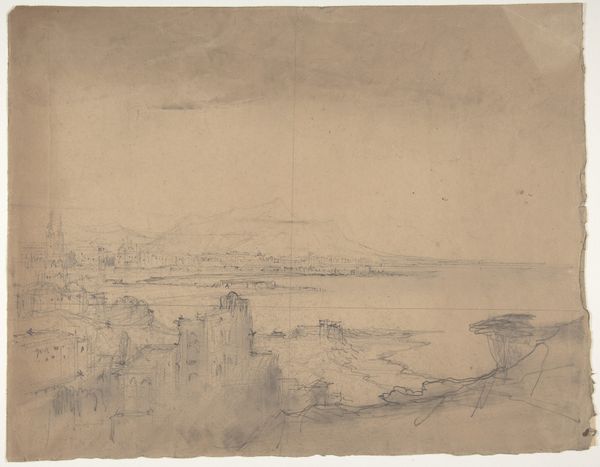
drawing, print, pencil
#
drawing
# print
#
landscape
#
romanticism
#
pencil
#
cityscape
#
realism
#
building
Dimensions: sheet: 13 3/4 x 17 1/2 in. (34.9 x 44.5 cm)
Copyright: Public Domain
Editor: Here we have John Ruskin's pencil drawing "Naples" from 1841, currently residing at the Metropolitan Museum of Art. It's such a delicate rendering of the city, almost dreamlike in its soft, gray tones. What can you tell me about this work? Curator: Well, consider the material: graphite. A seemingly simple medium, yet Ruskin masterfully employs it to depict a complex social landscape. Naples, in 1841, wasn't just a picturesque cityscape; it was a hive of industry, poverty, and burgeoning tourism. Ruskin's choice of pencil – easily portable, readily available – speaks to the changing conditions of artistic production and travel. This drawing served as a template to mass-produced prints, broadening consumption. Editor: So the means of production influence our perception? Curator: Precisely. The very act of rendering Naples in pencil connects the artwork to broader themes of accessibility, replication, and the commodification of landscape. Note how he highlights certain architectural details. The eroding surfaces suggest the impact of labour on this environment, with nature as the raw material for culture. It's more than a pretty picture, wouldn't you agree? Editor: It seems a world away from those grandiose Romantic paintings that focused on the sublime. I guess I always thought Ruskin was more aligned to them! Curator: That's a misconception many hold. While themes of Romanticism remain present, this drawing roots itself firmly in observable, reproducible reality. And the labor implied in representing that reality with affordable materials. Consider who bought Ruskin's prints of “Naples." They weren't catering to the nobility like older paintings would, these materials allow the everyday tourist to connect and purchase a token from Ruskin’s “Naples”. Editor: This has provided such a new, complex way to see “Naples." Seeing the means through which an artwork is created, really affects the outcome. Curator: Indeed. And the subsequent distribution and audience reception. We have explored together the impact labor and commercial reproduction can have. I wonder, are there are similar ways of interpreting today's artworks?
Comments
No comments
Be the first to comment and join the conversation on the ultimate creative platform.
